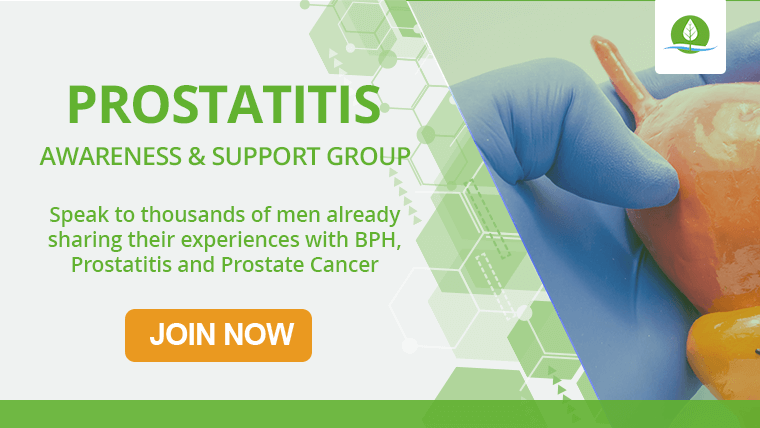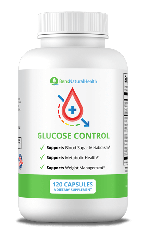- Q: What Is Prostatitis?
- Q: What Is Epididymitis?
- Q: Can Prostatitis Cause Epididymitis?
- Q: What’s the Link Between Prostatitis and Epididymitis?
- Q: Epididymitis vs Prostatitis: What are the Similarities?
- Q: What are the Differences of Prostatitis vs Epididymitis?
- Q: Will My Ability to Father Children With Prostatitis or Epididymitis Be Reduced?
- Q: How Long Do Acute Epididymitis and Prostatitis Last?
- Q: What Is the Fastest Way to Get Rid of Epididymitis and Prostatitis?
- Q: What Should You Not Do With Prostatitis or Epididymitis?
- FAQs on Prostatitis vs Epididymitis Symptoms
- Conclusion
- Our Medical Review Process
- Our Editorial Guidelines
- Medical Disclaimer
- Source
The man’s body, particularly the prostate gland and testes, can encounter a range of issues, from an enlarged prostate and urinary infections to more persistent problems like prostatitis or epididymitis. While these two conditions differ, they also share important similarities that every man should know.
We spoke with Dr. Kelepurovski, an expert in men’s urological health, to delve deeper into the differences and connections between epididymitis vs prostatitis. Dr. Kelepurovski offered valuable insights, evidence, and research on both ailments during the discussion. He emphasized how critical it is for men to understand these conditions from a medical standpoint, so they can seek proper care and prevent potential complications.
Dr. Kelepurovski has provided thorough resources and support materials referenced throughout this interview. Everything shared here has undergone medical review to ensure accuracy and reliability.
Q: What Is Prostatitis?
Dr. Kelepurovski answers: Prostatitis is essentially a swelling, or inflammation, of the prostate gland. Clinically, we consider it one of the most common urinary tract syndromes—about 25% of all urologist visits worldwide relate to prostatitis. After benign prostatic hyperplasia (BPH) and prostate cancer, prostatitis ranks as the third most frequent urinary tract ailment in men.
A 2017 review broke down prostatitis by pathogenesis, etiology, and other factors. Typically, we have:
- Acute bacterial prostatitis
- Chronic bacterial prostatitis
- Chronic pelvic pain syndrome/chronic prostatitis
- Asymptomatic prostatitis
For men who are asymptomatic, often termed asymptomatic inflammatory prostatitis, there are no noticeable signs at first. A diagnosis might only emerge if we’re testing for something else—like reproductive or urinary issues.
Additionally, other forms exist, such as viral, fungal, or gonococcal prostatitis. In chronic prostatitis, the precise trigger can remain unclear, and it may involve organisms aside from bacteria, irritation from activities like bicycle riding, or immune responses to past infections.If the problem stems from a bacterial infection, it can be acute (sudden and short-lived) or chronic (gradual onset and longer duration). The infection may travel from the urethra into the prostate. Chronic infectious prostatitis can sometimes cause chills and fever, though the severity of prostatitits symptoms varies. Whether it’s acute or chronic, it’s wise to consult a specialist if you suspect prostatitis.

Q: What Is Epididymitis?
Dr. Kelepurovski answers: Epididymitis involves inflammation in the epididymis—a coiled tube that stores and carries sperm from the testicles. It’s often tied to bacterial infections, which may be due to a retrograde flow of urine (commonly in older patients) or a sexually transmitted disease (commonly in those between 20 and 40).
In fact, Neisseria gonorrhea and Chlamydia trachomatis account for roughly half of epididymitis cases in men under 39. In younger, sexually immature males, trauma (e.g., repetitive injuries in sports) can spark inflammation. This condition may also come from viral or chemical-induced causes.
Epididymitis can be short-term (acute) or long-term (chronic). Acute epididymitis surfaces quickly, typically with redness and significant discomfort. With prompt treatment, these symptoms usually improve. However, chronic epididymitis features duller aches that come on more slowly and can persist. Though they may lessen at times, these symptoms often flare up again later.
Q: Can Prostatitis Cause Epididymitis?
Dr. Kelepurovski answers: Certain complications from acute or chronic prostatitis can indeed lead to bacteremia, which is when viable bacteria enter the bloodstream. From there, infections can spread to other areas, such as the epididymis, creating additional problems like a prostatic abscess or infection in the bones near the spine or the pelvis.
Q: What’s the Link Between Prostatitis and Epididymitis?
Dr. Kelepurovski answers: The primary connection often lies in the complications that result from prostatitis. If prostatitis—whether acute or chronic—is untreated and worsens, the bacteria or inflammatory process could eventually affect the epididymis.
For chronic bacterial prostatitis (CBP), E. coli and other gram-negative Enterobacteriaceae are frequent culprits. CBP is most commonly seen in men aged 36 to 50. Roughly 5% of acute bacterial prostatitis cases may progress to chronic bacterial prostatitis if not adequately addressed.
Meanwhile, epididymitis typically stems from STDs, trauma, or infections that migrate from the urinary tract or prostate into the epididymis. We see an overlap in the organisms involved, particularly for certain sexually transmitted infections. While more investigation is needed to clarify precisely how these pathogens might cause both prostatitis and epididymitis, the concept of bacteria or pathogens spreading along urological structures is central to both conditions.
Q: Epididymitis vs Prostatitis: What are the Similarities?
Dr. Kelepurovski answers: Both can cause:
- Painful urination
- Frequent or urgent urination
- Pelvic or groin discomfort
- Testicular pain
With acute bacterial prostatitis, some men get flu-like signs, including fever, muscle aches, and chills. Epididymitis can occasionally bring on fever as well, though it’s more commonly associated with pain and swelling around the scrotum.
Both conditions also have acute (rapid and intense) and chronic (longer-lasting, often milder) forms. For acute epididymitis, the inflammation and pain typically subside faster under the right antibiotic regimen, rest, and sometimes ice packs. Acute prostatitis likewise requires antibiotic therapy and painkillers, and typically responds well if treated promptly.
Trauma is another shared factor. An injury to the groin or severe nerve damage in the lower urinary tract can predispose men to either of these ailments—chronic prostatitis in some cases, epididymitis in others.
Q: What are the Differences of Prostatitis vs Epididymitis?
Dr. Kelepurovski answers: Although they share some symptoms, these are essentially two different sites of inflammation:
- Prostatitis affects the prostate gland. Diagnosis might involve blood and urine tests, digital rectal exams, and a prostatic secretion test (obtained via prostatic massage) to look for bacteria or inflammatory markers.
- Epididymitis involves the epididymis, that coiled tube behind each testicle. Diagnosis often includes ultrasounds, blood and urine analysis, and screening for STIs (sexually transmitted infections).
Hence, when investigating epididymitis, the focus is on testicular and scrotal examination, imaging (like ultrasound), and ruling out trauma or STD-related causes. In contrast, prostatitis evaluations target the prostate via a rectal exam and specialized fluid tests.
Q: Will My Ability to Father Children With Prostatitis or Epididymitis Be Reduced?
Dr. Kelepurovski answers: Both conditions can potentially affect male fertility, though the degree varies. For instance, epididymitis has been linked to anti-sperm antibodies in about one-third of cases, which can affect prostatitis fertility. Chronic bacterial prostatitis can also harm sperm health, reducing total sperm motility and vitality if the infection persists.
But it’s important to note that not everyone with these conditions automatically faces infertility. With timely medical treatment, lifestyle measures, and proper follow-up, many men continue to father children without significant difficulties.
Q: How Long Do Acute Epididymitis and Prostatitis Last?
Dr. Kelepurovski answers:
- Acute epididymitis generally lasts six weeks or less, often improving significantly once antibiotics and other therapies (e.g., ice, rest) begin.
- Acute prostatitis may resolve in a matter of days to a few weeks, provided it’s diagnosed promptly and treated adequately.
If symptoms persist beyond three months, we label them as chronic—either chronic epididymitis or chronic prostatitis.

Q: What Is the Fastest Way to Get Rid of Epididymitis and Prostatitis?
Dr. Kelepurovski answers: In most cases, antibiotic therapy is key—particularly if there’s a bacterial component. Physicians may also recommend:
- Pain relievers (OTC or prescription)
- Rest and cold packs (for epididymitis)
- Stool softeners if bowel movements aggravate your discomfort
- Lifestyle adjustments, like avoiding strenuous activities or irritants
Ultimately, it’s best to visit a specialist if you notice swelling, unusual discomfort, or changes in urinary habits. That way, you can identify whether the issue is bacterial or due to another cause and initiate the appropriate treatment quickly.
Q: What Should You Not Do With Prostatitis or Epididymitis?
Dr. Kelepurovski answers:
- Don’t ignore STI symptoms: If you suspect any sexually transmitted infection, seek treatment promptly; untreated STIs frequently lead to epididymitis.
- Avoid irritating substances: That includes spicy foods, excessive caffeine, and alcohol, which can irritate the bladder and worsen prostatitis.
- Stay hydrated: Water and unsweetened teas help flush bacteria and reduce inflammation.
- Don’t delay professional care: The sooner you address painful or swelling symptoms, the less chance these conditions have to create long-term issues.

FAQs on Prostatitis vs Epididymitis Symptoms
Q: Can epididymitis and prostatitis occur simultaneously?
Dr. Kelepurovski answers: Yes, they can occur simultaneously. In some cases research suggests that an infection in the prostate (prostatitis) may extend to the nearby epididymis—especially if it is bacterial in nature—leading to concurrent inflammation of both structures. This situation, while not the most common presentation, is recognized in clinical practice, particularly when initial infections are left untreated or are severe.
Q: Are either epididymitis or prostatitis ever contagious through sexual activity?
Dr. Kelepurovski answers: Overall, prostatitis is often regarded as non-contagious via sexual intercourse precisely because its origins are often associated with bacteria from the urinary tract or any other non-sexually transmitted source. However, in the case of epididymitis where irritation stemmed from gonorrhea and chlamydia, the agent of the infection can also be passed on through intimate relations. It is necessary to note that although inflammation (epididymitis) is not “inflected” by a partner, the illness causing pathogen is.
Q: What role might stress or anxiety play in worsening prostatitis or epididymitis symptoms?
Dr. Kelepurovski answers: Prostatitis and epididymitis are not caused by stress and anxiety, but as the study confirms, these two factors can worsen existing symptoms. Psychological stress can increase the tension and sensitivity to pain in muscles, which can lead to an increase in inflammation in chronic sufferers. Furthermore, stress can modulate the immune response in the body and, therefore, increase the frequency and severity of flare-ups in men suffering from chronic pelvic pain syndromes.
Q: Are supportive garments helpful in managing epididymitis-related pain?
Dr. Kelepurovski answers: Supportive clothing can be beneficial in relieving pain associated with epididymitis, for example, athletic supporters or tight fitting underwear. It aids in increasing scrotal support which decreases movements that may worsen discomfort or inflammation during activities. Unfortunately, these garments’ effectiveness diminishes in the absence of other treatment methods such as antibiotics if there’s an infection, pain medications, and adequate sleep.
Q: How can I differentiate between normal soreness after strenuous activity and early signs of epididymitis or prostatitis?
Dr. Kelepurovski answers: Most post-exercise soreness is also known as delayed onset muscle soreness (DOMS), which is manageable with rest, hydration, and even OTC pain medications. Contrastingly, the research indicated that early signs of epididymitis or even prostatitis can be defined by unrelenting pain that doesn’t seem to get better with rest, painful urination with a burning sensation, increased urge to urinate, swelling in the groin or scrotal regions, and sometimes fever. If this is the case, it’s best to get a medical opinion as soon as possible, especially if these additional symptoms are presented or the soreness lasts past a few days.
Q: Are there specific signs that epididymitis or prostatitis has spread beyond the reproductive system?
Dr. Kelepurovski answers: Indeed, patients may develop systemic symptoms if the infection spreads outside of the reproductive system, such as a high fever, chills, general malaise, and pain radiating to the lower back or abdomen. These symptoms indicate that the infection may have entered the bloodstream (bacteremia) or affected other organ systems, which can result in more serious complications like sepsis or the formation of an abscess. If these symptoms appear, patients should seek medical attention right away.
Conclusion
Both prostatitis and epididymitis can wreak havoc in a man’s reproductive system. These conditions can cause discomfort, inflammation, and pain that directly affect quality of life and even sexual function. Understanding the differences between epididymitis vs prostatitis is key to identifying the appropriate treatment. Prompt intervention is crucial to avoid complications such as bacterial spread or fertility issues.
If you notice symptoms such as testicular soreness, painful urination, changes in urinary frequency, fever, or unexplained groin pain, it’s important to seek medical attention. A thorough evaluation will help determine the cause, whether it’s prostatitis vs epididymitis, and ensure you receive the most effective treatment plan. Taking action early can reduce discomfort and help you maintain a healthier, more active lifestyle.
Our Medical Review Process
At Ben’s Natural Health, we are committed to the highest standards of transparency, accuracy, and scientific rigor. Every piece of content is carefully crafted by medical professionals and undergoes a thorough review every 12 to 24 months. This detailed process ensures that our information remains accurate, current, and rooted in credible, evidence-based research. We exclusively reference peer-reviewed studies from trusted medical journals, offering complete citations and direct links to enhance trust and reliability. Learn more about our medical review process and research standards.
Our Editorial Guidelines
For over 25 years, Ben’s Natural Health has been a trusted source for reliable, scientifically grounded information on natural health. Our editorial guidelines uphold the quality and integrity of every article we publish. All content is authored by qualified professionals, including doctors, dietitians, nutritionists, fitness experts, and surgeons, and undergoes independent quality checks. We prioritize transparency by showcasing the credentials and bios of our contributors at the start of each article. Discover more about how we create and verify our content through our editorial guidelines.
Medical Disclaimer
The content on this blog is intended for informational purposes only and should not be used as a replacement for professional medical advice, diagnosis, or treatment. Although our articles are written and reviewed by licensed medical professionals, they may not address your specific health needs. Always consult your primary care physician or a qualified healthcare provider before making any health decisions. Never disregard or delay seeking professional medical advice based on the information here. Your use of this blog and its content is entirely at your own risk.






